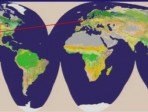 00:33:00
00:33:00
Communication on Earth, using Cables and Satellites
A brief look at the Physics behind sending signals along cables and via geostationary satellites. An experiment to measure the speed of an electrical pulse in a cable is described and the Physics of the orbits of communcations satellites is develope....
More details | Watch now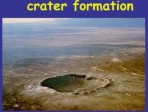 00:11:00
00:11:00
Crater Formation in Sand
A description and demonstration of the way in which craters formed by dropping objects into sand can be linked to some elementary physics
More details | Watch now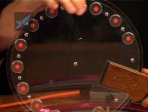 00:04:00
00:04:00
Electrical Generator
This short video shows one of the demonstrations for the Physics SEPNet exhibition - "Who will keep the lights on?" which travelled around the southern UK from February 2009. We describe and explain the electrical generator demonstration which Jona....
More details | Watch now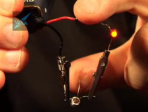 00:03:00
00:03:00
How does a transistor work?
A short video explaining how transistors work. At the heart of our high-tech society with radios, mobile phones, computers and space exploration are tiny electronic components called transistors. They have revolutionised electronics and in the pr....
More details | Watch now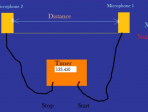 00:04:00
00:04:00
Measuring the speed of sound – experimental details
A short clip showing the measurement of the speed of sound over short distances.
More details | Watch now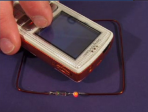 00:04:00
00:04:00
Mobile Phone
Jonathan shows us with a cheap and simple homemade demonstration how your mobile telephone generates radio waves in order for you to use it to communicate. As you will see you can use this method to explore many aspects of your mobile phone!
More details | Watch now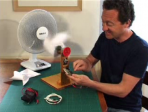 00:09:00
00:09:00
Paper Windmills
Jonathan makes some simple paper windmills/turbines and experiments with a simple generator to power house hold devices such as torches, calculators and even a radio.
More details | Watch now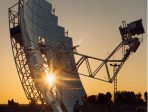 00:02:00
00:02:00
Parabolic Light Collectors
Parabolic surfaces can be used to concentrate energy for example to focus sunlight to heat things. Using an old World War II spot light mirror we demonstrate how easy it it is to concentrate enough energy to cause combustion. Finally, we show how to ....
More details | Watch now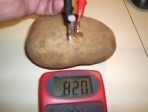 00:07:00
00:07:00
Potato Battery
When two different types of conductors are pushed into a potato chemical reactions take place charging them up - we have a simple electrochemical cell. A potato, zinc screw and carbon rod produce about 1V. We experiment joining a few of these cells u....
More details | Watch now 00:06:00
00:06:00
Radiation in Your Kitchen: Basic Microwave Oven Physics
They're awesome to have in the kitchen, but did you ever wonder how your microwave actually works? This is a quick introduction to the theory that makes our home microwave ovens possible. Here, Daniel covers the differences between microwave heati....
More details | Watch now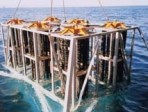 00:04:00
00:04:00
Seawater Battery
When two different metals are placed in a salt solution (an electrolyte) the chemistry produces a voltage. This is called a cell. By wiring up a number of these cells we can make a battery and use it to power electrical circuits.
More details | Watch now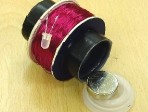 00:04:00
00:04:00
Shake-a-Gen
This is a simple yet effective demonstration of electricity generation. 500 turns of wire are wound onto a 35mm film can and the two ends are attached to an LED light. A strong magnet is placed in the can and the lid fixed back in place. The generato....
More details | Watch now
